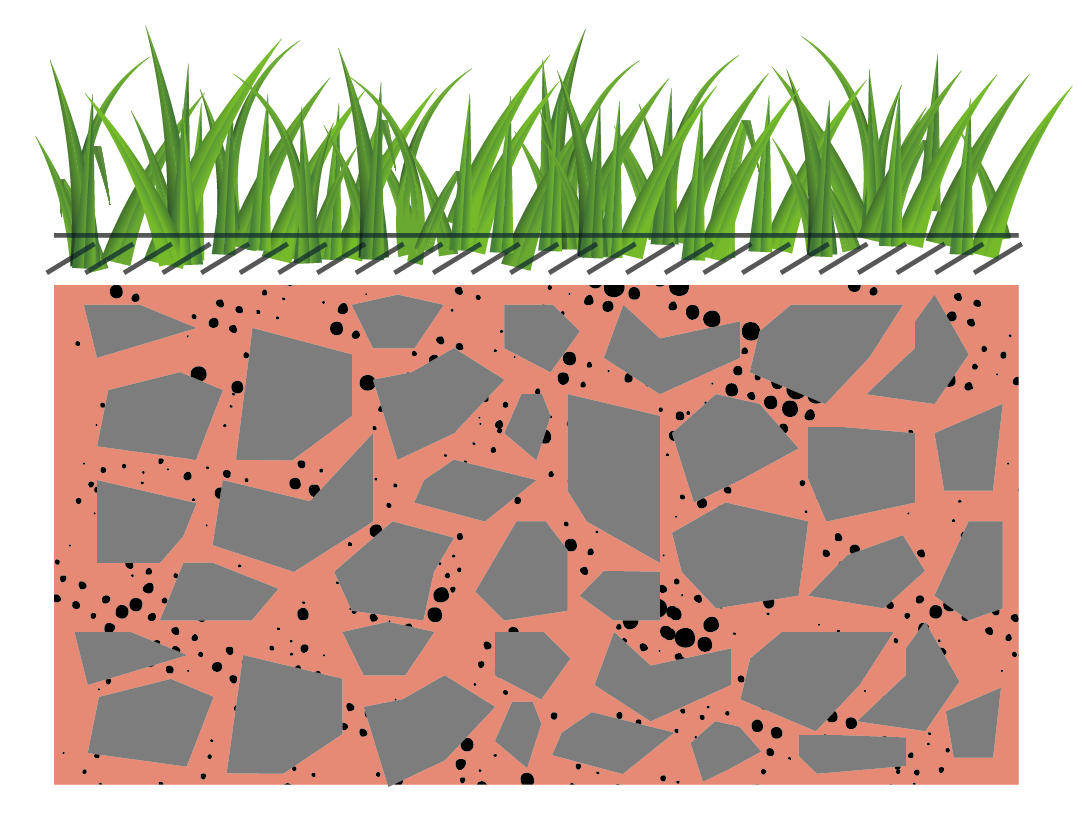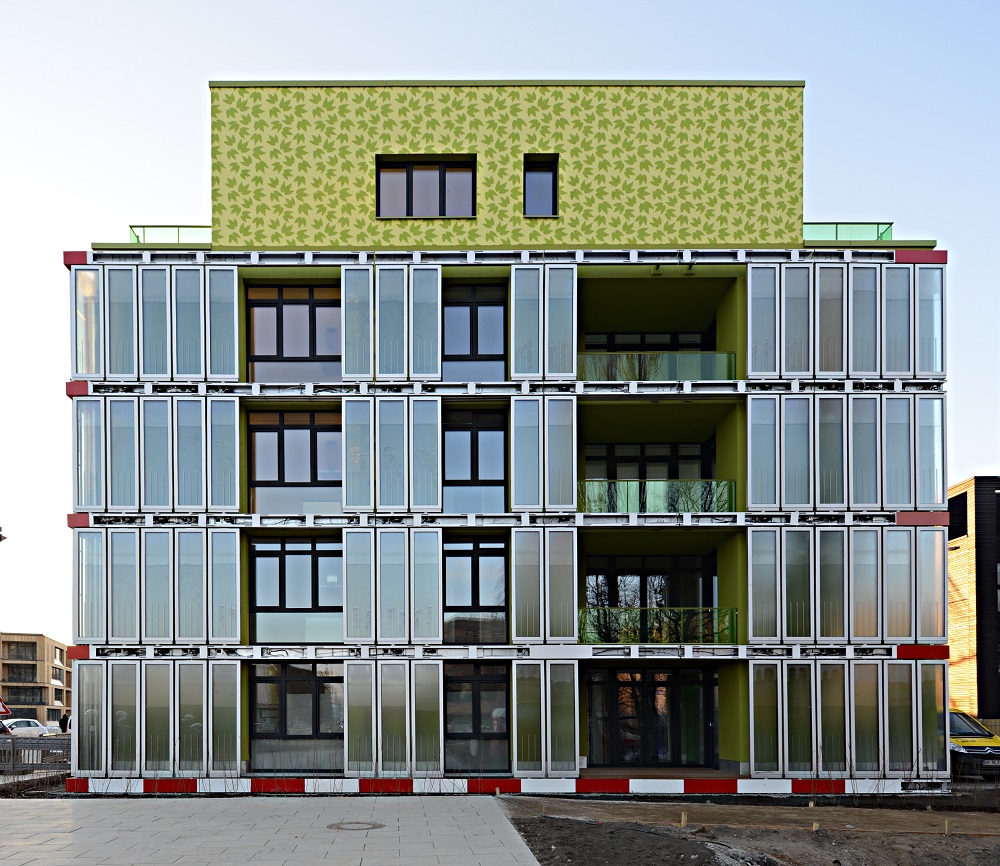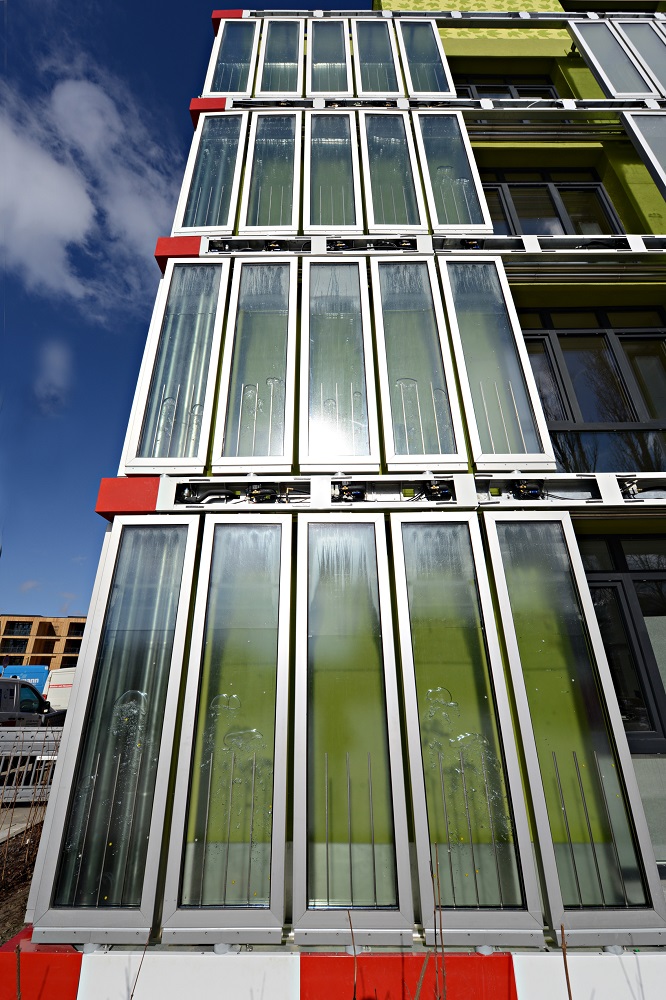Innovative materials are making buildings more energy-saving than ever. These buildings have grass on the wall and they can even generate power! Really unbelievable.
Buildings are man-made constructions which usually cause environmental impacts. Due to growing population and urbanization, buildings around the world are increasing at an unprecedented pace. With much concern about it, scientists and architects are working together to make buildings more ecofriendly. So far they have come up with some interesting and feasible ideas both in materials and constructing methods. It’s O’right is going to show you 3 cutting-edge inventions in architecture.
Meadow on the wall

This plant-growing concrete is mixed with Magnesium Trisilicate for the purpose of creating a mild acid environment for plants to grow.The multilayered structure is separated by three parts. The innermost layer is water-proof; the middle one is where seeds stay; and an outer coverage which allows water to go through and prevents the moisture from evaporating.
After the construction is completed, plants like moss and lichen will gradually grow out of the wall. The dull grey building gradually turns into a truly “green building." These plants not only make the building beautiful, they are also efficient carbon absorbers as well as provide great insulation. Open the window and you will be greeted by the freshly pure air!
Road that gulps water
In the city area, most of the soil ground is covered with concrete or turned into asphalt roads, which have poor water seepage and tend to flood with heavy rainfall. Asphalt and concrete also retains heat and therefore is one of the main contributors to the heat island effect that we usually experience in big cities. At summer noon the temperature on the asphalt pavement can be as high as 50~60 ℃ , truly not a smart road design.
The unbearably high temperature makes living impossible without air conditioning, which causes a roller-coaster rise of electricity consumed during summer. Fortunately, this situation will change soon due to the introduction of a permeable pavement. This kind of pavement is made with materials like gravel, permeable bricks or permeable concrete. The processed gravel layer under the pavement has excellent water retention capacity because it allows rainwater to smoothly seep into the soil.
You may doubt the strength of this kind of “poorly-constructed" road. According to experiments, a 2-ton truck running on it causes not the slightest harm to this innovative road. Like a sponge, one square meter of permeable road amazingly gulps down 270 liters of water every minute.

From this successful example we can see that “sponge roads" are not only feasible but also inexpensive. “Sponge city" is going to become reality soon!
A building with algae-skin
This building is absolutely the greenest building in the world! In March 2014, an idiosyncratic building called BIQ appeared in Hamburg, Germany. The walls of the building consist of vertical blinds in which algae are actively growing. The algae function as a power generator to ensure power supply for this building. BIQ, which means Bio Intelligent Quotient, tells that the building is a highly intelligent construction.

Photo /// BIQ House, the first algae-powered building in the world, is designed by the German Arup Group.(Photo Credit: © Arup)

The building’s electricity and heat will be supported by the power generated on-site.This self-powered building is a revolution in both architecture and energy industry. In the future, buildings will be a shelter and a green power generating installation. It will hopefully solve our excessive reliance on nuclear energy and petroleum fuel – a significant stride towards sustainability.
Sources
1.“Researchers develop‘biological concrete’ for moss-covered walls.”
2.“Air quality and other benefits of plant-covered buildings.”
3.“Porous pavement.”
4. “How green pavement works.”
5.“The BIQ House.”
6.“The world’s first algaepowered building opens in Hamburg.”


